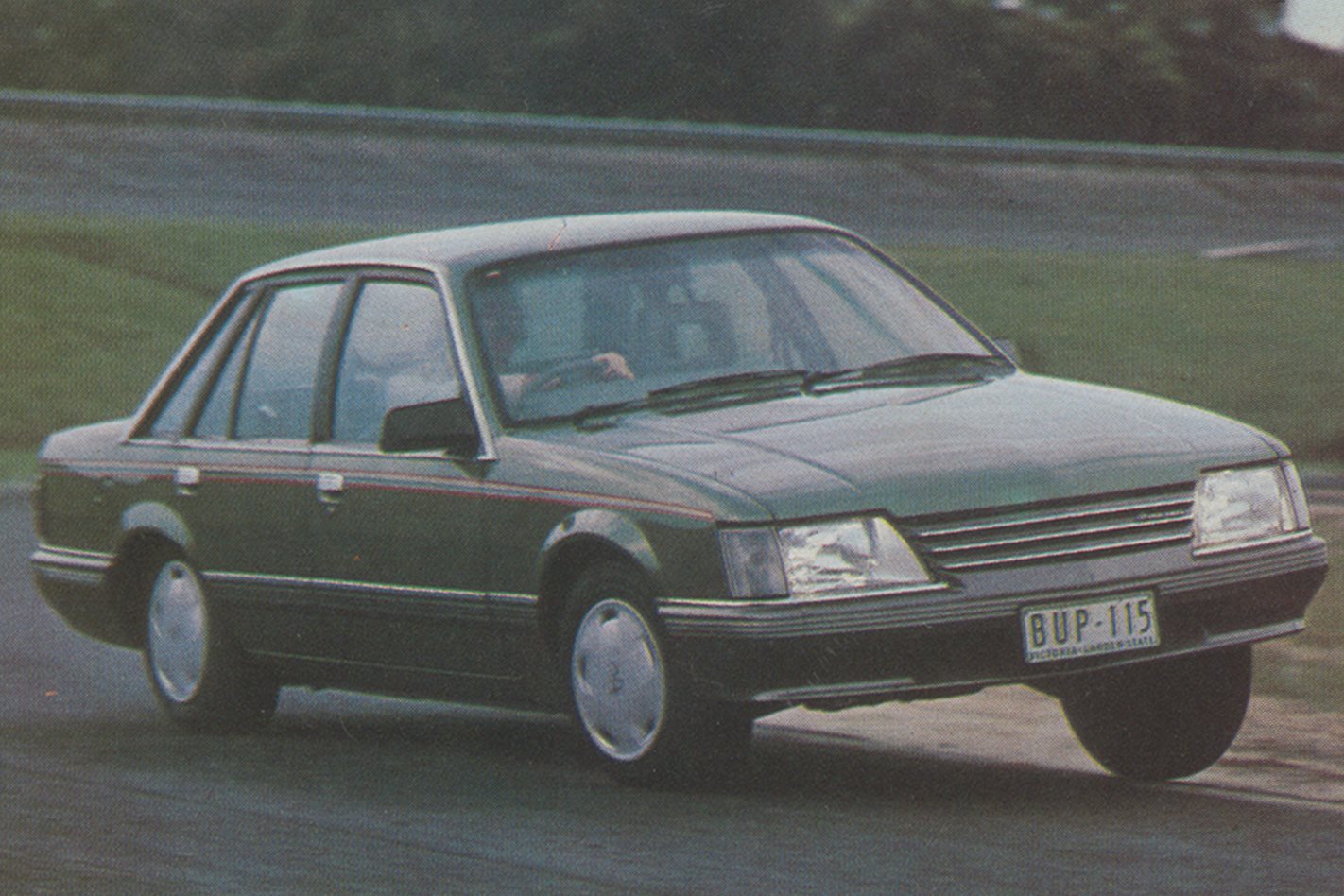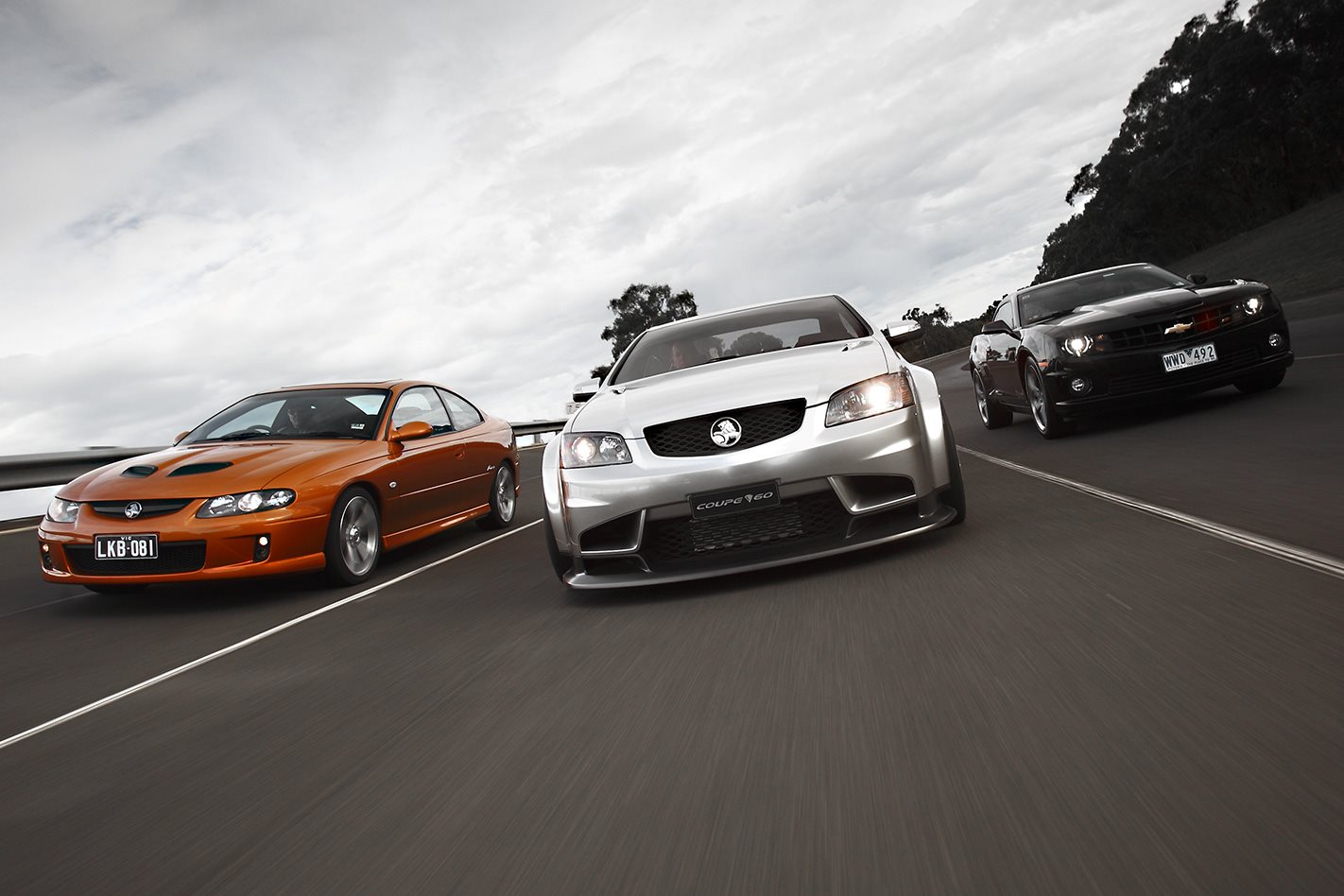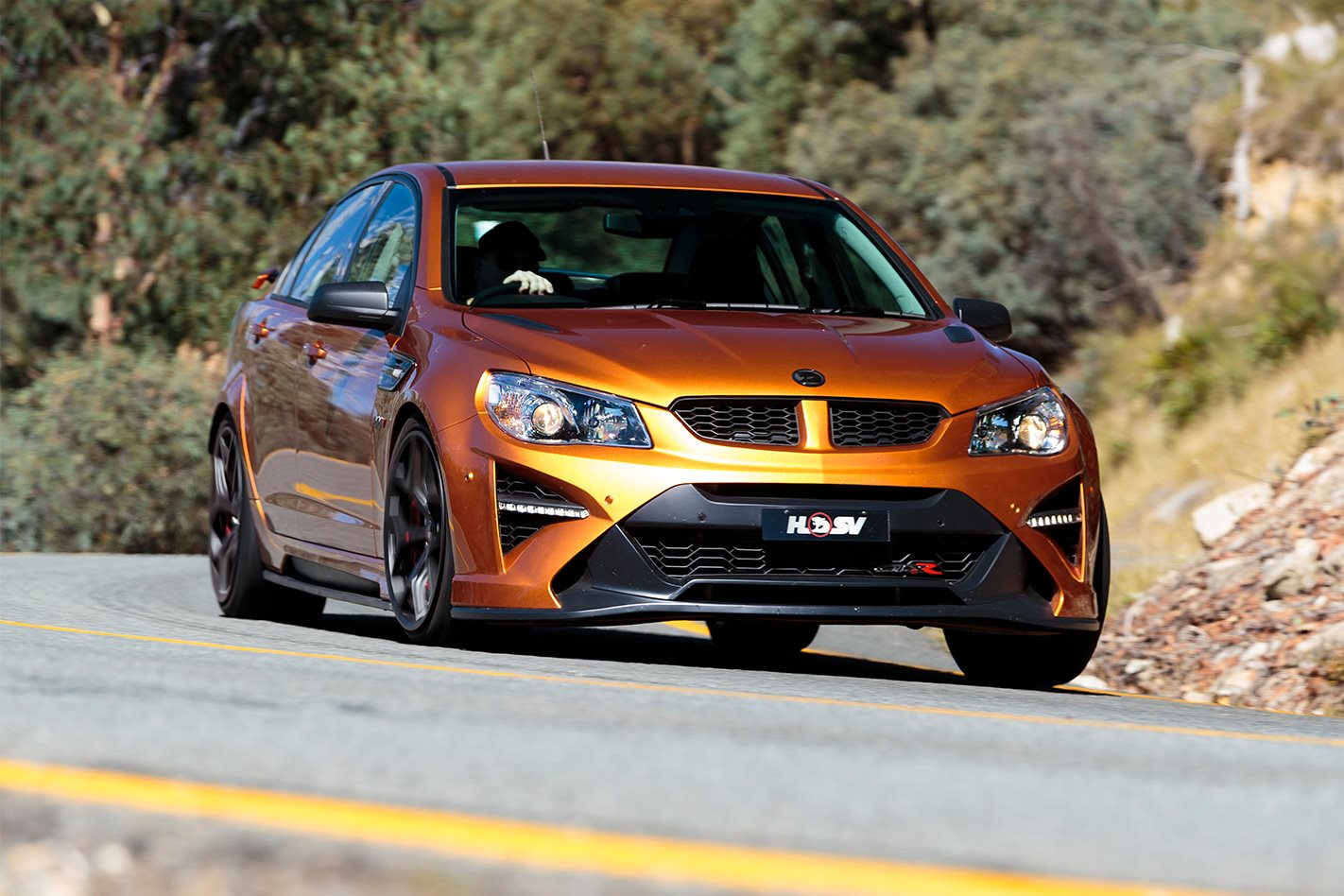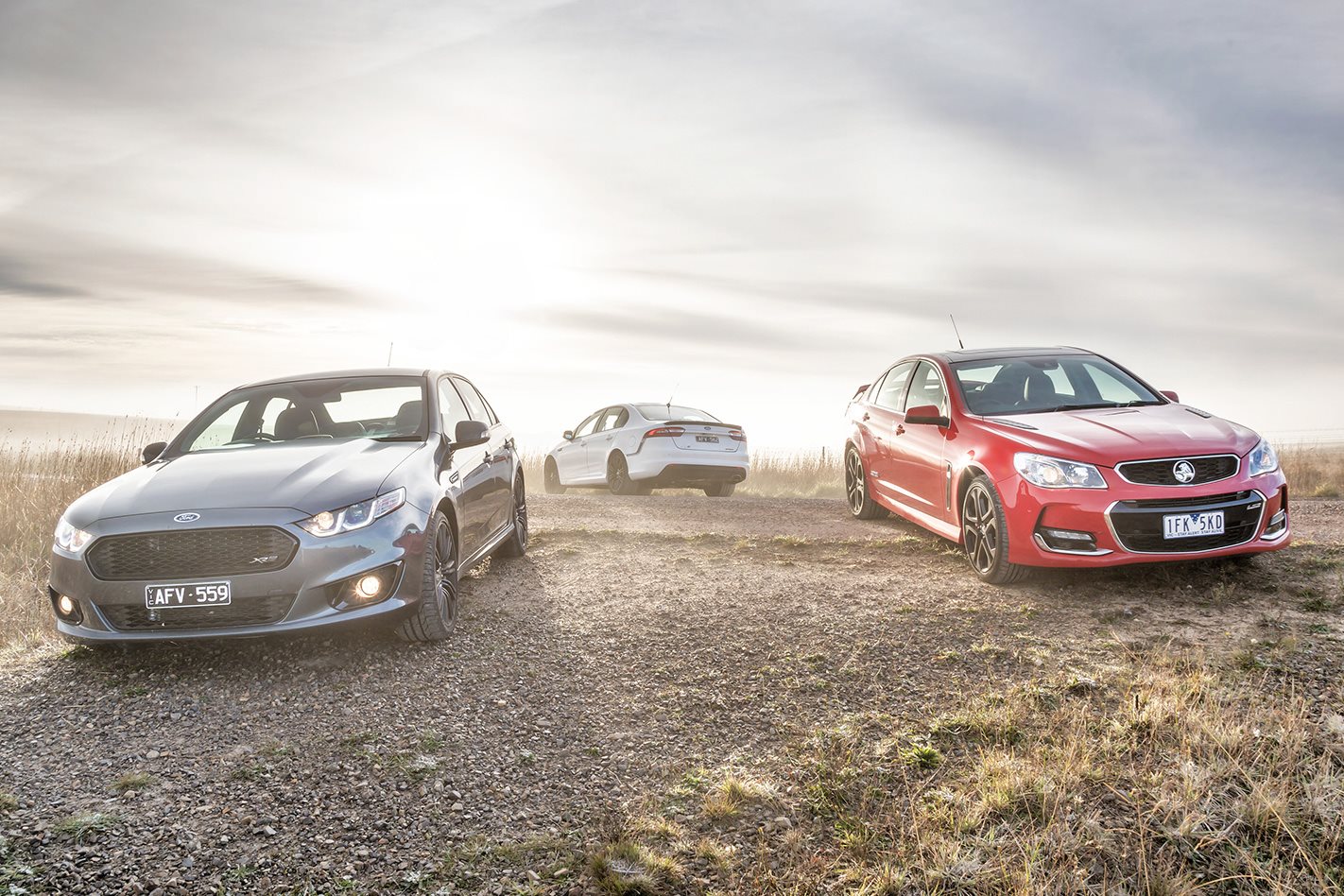How the pendulum has swung. There was a time, in 1980, when pundits were predicting the Commodore Four would become the best-selling model in the range and the General talked optimistically of the engine taking 30 percent of production.
They were words spoken glibly at the height of the second energy crisis … Today, of course, the Commodore Four exists only for a few export markets (mostly New Zealand).
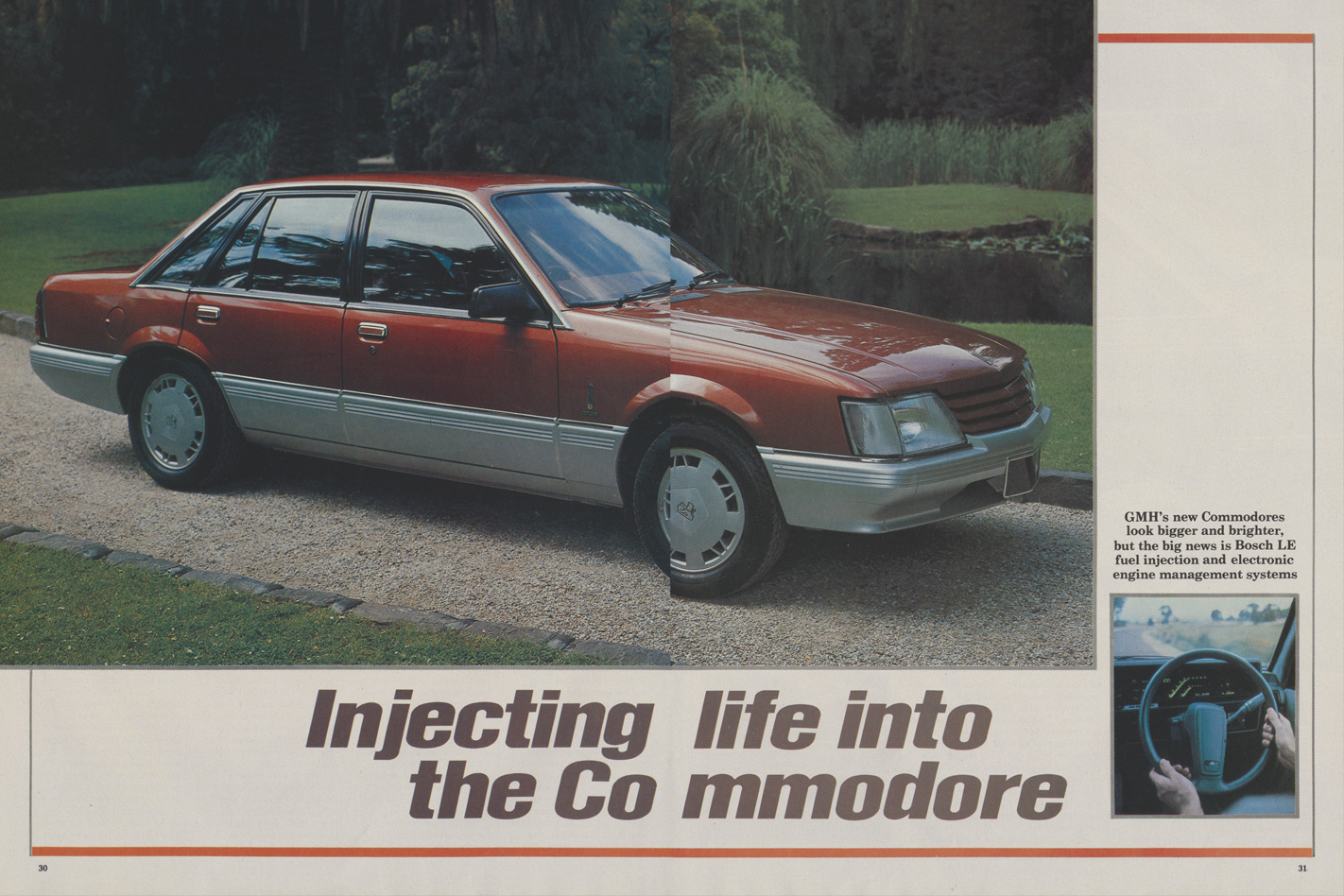
Of course it will take more than just performance to bring the Commodore back to its position as the top selling car in Australia, a title held for three years – 1979, ’80, ’81 – until it was submerged by Ford’s Falcon. But that’s the target Holden has set for itself in ’84 and nothing short of a Commodore sales rise of 40 percent will satisfy GMH.
Managing director, Chuck Chapman, lays much of the blame of the sales slump on the lack of visible change and it’s true that a VH looks like a VC, which was little changed compared to the original VB. The VK sets out to correct the pattern without making drastic and expensive sheet metal changes. You could say it’s an attempt to extract the greatest obvious difference for the least money.
The final prong in the Commodore’s three-way attack on the Falcon concerns price. No, we don’t know how much the VK will cost, but two months before its release we were assured that it would be “highly competitive” and based between the Sigma and the Falcon, which suggests a little more than $11,000 for the SL.

Nobody can dispute that, but for all its procrastination, the General can point to the existence of the V8 in its engine line-up and the fact that Ford no longer builds a bent eight in Australia.
Equally, however, it should be said that the 3.3 litre Holden six is an old engine, stretched in capacity as far as it will go and the V8 is a necessity for both the Commodore and the WB models, whether they are utility and panel van or the Statesman and Caprice. Dropping the 2.85 litre engine does mean that at last the Commodore competes on an equal footing with the Falcon in base engine capacity.
The base 3.3 comes with four or five-speed manual Borg Warner gearboxes – the five-speeder for the first time with this engine – or automatic transmission. It is uprated by the use of a sophisticated electronic management system which uses a computer to evaluate six engine operations to provide the best spark timing for the engine under any given situation. The new engine is a major step forward.
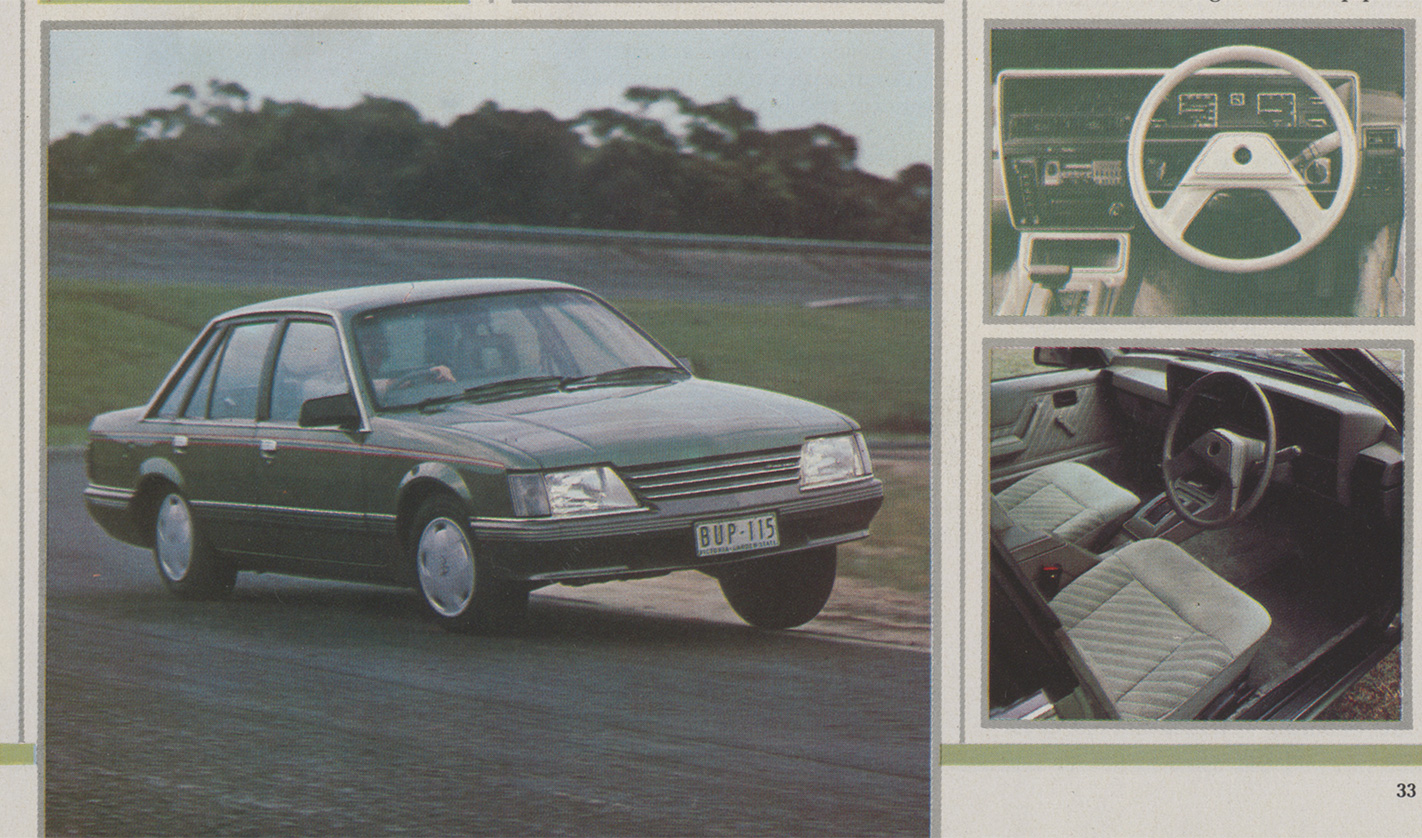
Holden’s engineers developed the EST in conjunction with a revised carburettor to give faster warm-up, superior fuel economy and cleaner running in all conditions with a more responsive throttle. The use of an air pump means a considerable reduction in emissions with minimal adverse effects on performance and economy.
And for the first time in two years the 3.3 engine with manual transmission is once again available in NSW since it meets that state’s unique pollution requirements. As our chart shows there is a marginal power increase over the old 3.3 engine.
But it is the coming of a sophisticated fuel injection system that will receive the most ink in any story about the new Commodore. Our sources had continually informed us the Holden fuel injection set-up would be of the throttle body type common to many American cars. We are pleased to be wrong, (but won’t listen in future) for the 3.3 engine gets the very latest Bosch LE-2 system that lifts torque by 15 percent over the VH and power by a huge 27 percent, giving performance which Holden says is comparable to many V8s. Surely it really means its own 4.2 litre V8 which has been dropped from the Commodore, although it will continue to be offered on the WB commercials.
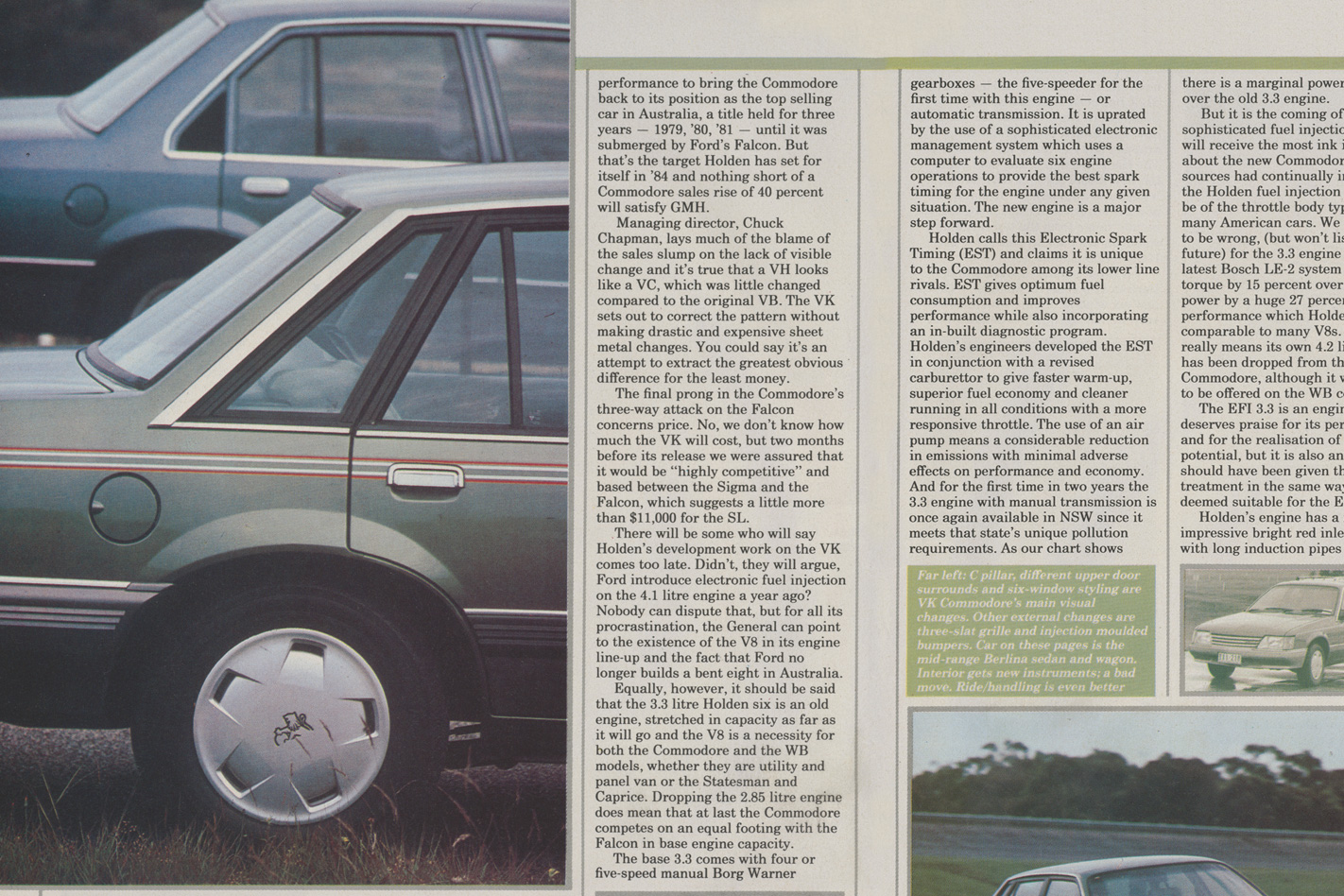
The advantages of fuel injection are well known and add greatly to the appeal of the Commodore six. This, surely, is the engine the car has always deserved. Cold starting requires no more than a turn of the key – there is no need to touch the accelerator – warm-up is quick and idle consistent, full acceleration is available immediately and there is plenty of it.
But the most attractive feature is the instant throttle responsiveness that gives the VK a new found agility. There is now a surge of power from the car, and with its far wider effective rev range the 3.3 EFI has excellent performance, despite only being offered in conjunction with an automatic transmission. A 17.7 second time for the standing 400m is very impressive and highly competitive.
The retention of the nasty old rocker cover becomes even more absurd when you understand the detail work that has gone on in the engine’s internals. The engine still isn’t of a cross flow design, but each cylinder has its own inlet pipe with the tubular exhaust extractors connecting in an unconventional 1, 6-2, 5-3, 4 combination to a single exhaust pipe after a full engine stimulation program established that this set-up provided the most power.
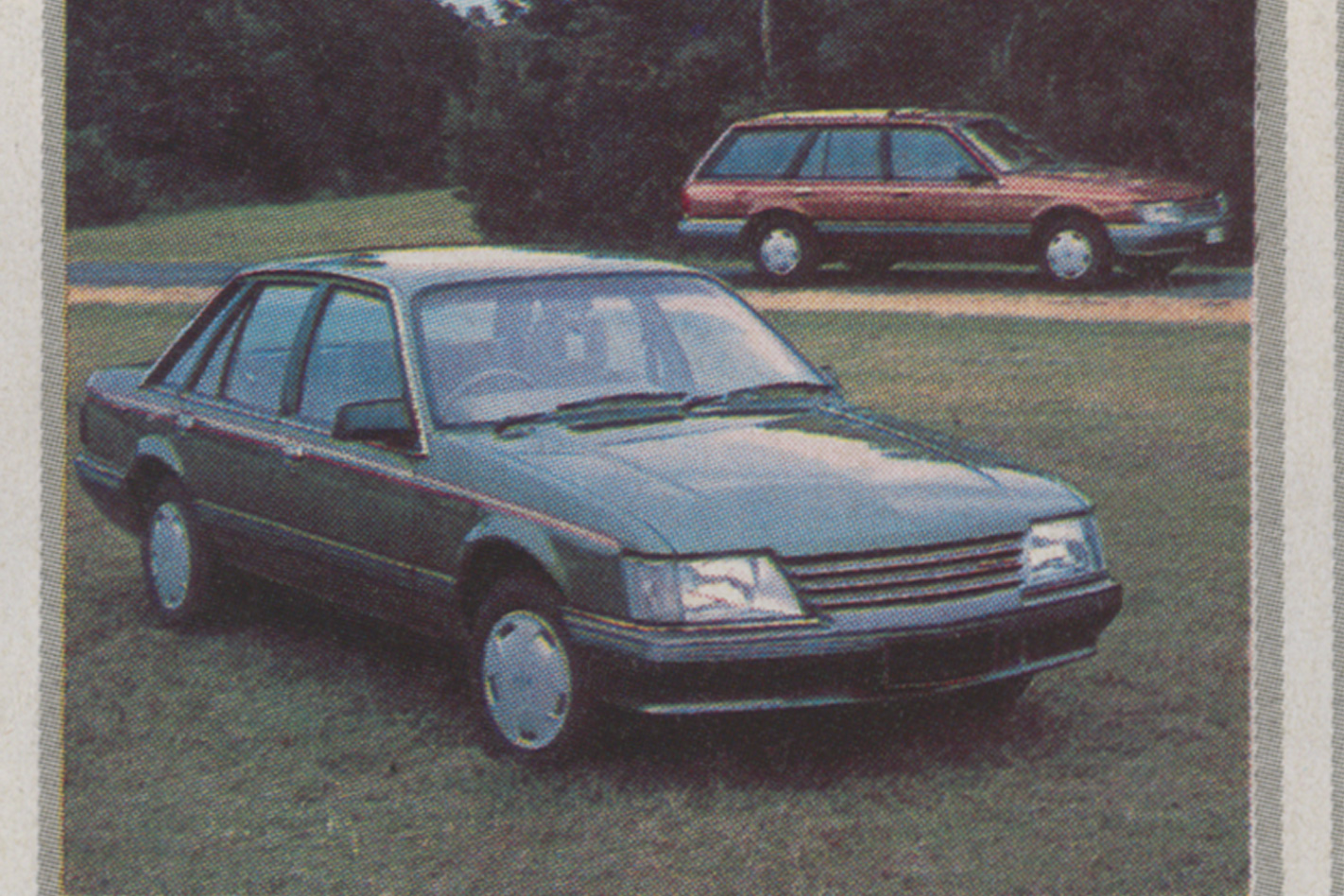
Holden began development of the fuel injection system way back in November 1980, when former assistant chief engineer and now head of the new Opel T-car program in Germany, Peter Hanenberger, initiated research on a 2.85 litre six, very much in secret at the time. In February 1981 the program gained official recognition under engine man Warwick Bryce and has steadily progressed to reach production form as a third generation fuel injection engine.
Holden’s once laughable 5500 rpm redline can now be taken seriously with the EFI engine for it spins cleanly and smoothly from idle to the red. It’s a great shame you can’t buy the engine tied to a manual gearbox. Ford offers the 4.1 EFI with a four-speed, why doesn’t Holden?
The Commodore has always set the standard among Australian cars in ride/handling – a fact that one of its major rivals, Nissan, publicly acknowledged recently – but there has been subtle modification to give a flatter ride, better ride control and to further improve impact harshness. The changes are minor and only apparent under close scrutiny in a back-to-back comparison, when they can be fully appreciated, but they clearly make the VK an even more pleasant mode of transport with a touch more final oversteer and less body roll.
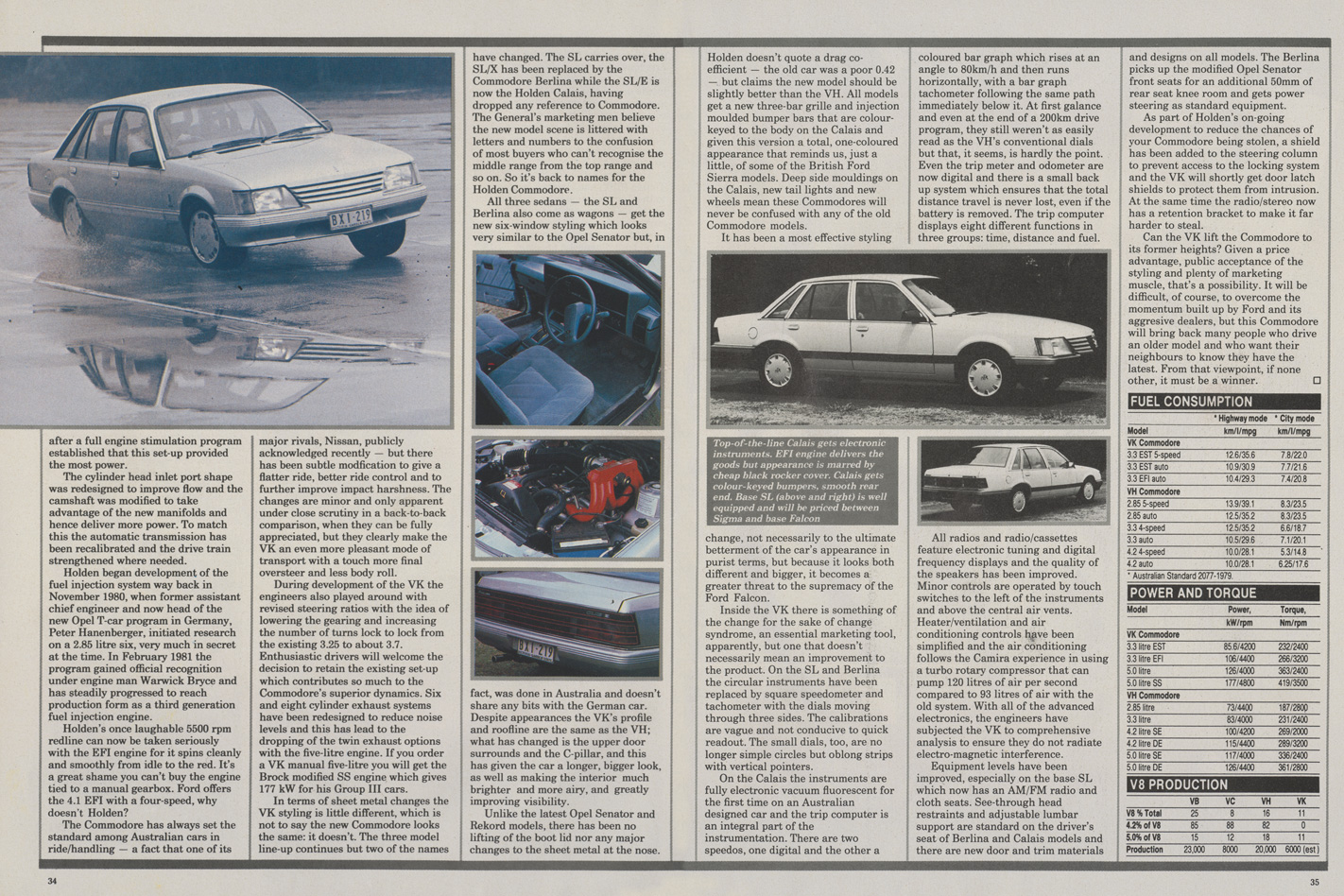
Six and eight cylinder exhaust systems have been redesigned to reduce noise levels and this has led to the dropping of the twin exhaust options with the five-litre engine. If you order a VK manual five-litre you will get the Brock modified SS engine which gives 177 kW for his Group III cars.
In terms of sheet metal changes the VK styling is little different, which is not to say the new Commodore looks the same: it doesn’t. The three model line-up continues but two of the names have changed. The SL carries over, the SL/X has been replaced by the Commodore Berlina while the SL/E is now the Holden Calais, having dropped any reference to Commodore.
The General’s marketing men believe the new model scene is littered with letters and numbers to the confusion of most buyers who can’t recognise the middle range from the top range and so on. So it’s back to names for the Holden Commodore.
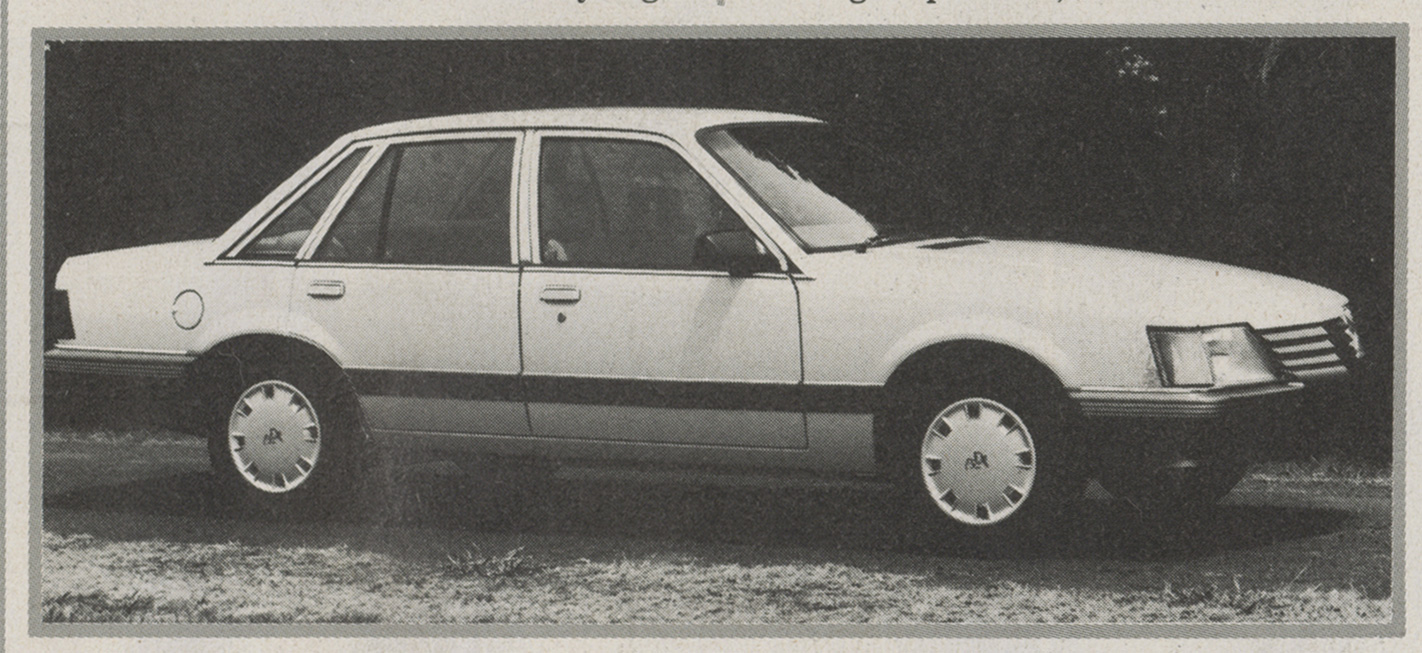
Despite appearances the VK’s profile and roofline are the same as the VH; what has changed is the upper door surrounds and the C-pillar, and this has given the car a longer, bigger look, as well as making the interior much brighter and more airy, and greatly improving visibility.
Unlike the latest Opel Senator and Rekord models, there has been no lifting of the boot lid nor any major changes to the sheet metal at the nose. Holden doesn’t quote a drag coefficient – the old car was a poor 0.42 – but claims the new model should be slightly better than the VH. All models get a new three-bar grille and injection moulded bumper bars that are colour-keyed to the body on the Calais and given this version a total, one-coloured appearance that reminds us, just a little, of some of the British Ford Sierra models. Deep side mouldings on the Calais, new tail lights and new wheels mean these Commodores will never be confused with any of the old Commodore models.
It has been a most effective styling change, not necessarily to the ultimate betterment of the car’s appearance in purist terms, but because it looks both different and bigger, it becomes a greater threat to the supremacy of the Ford Falcon.
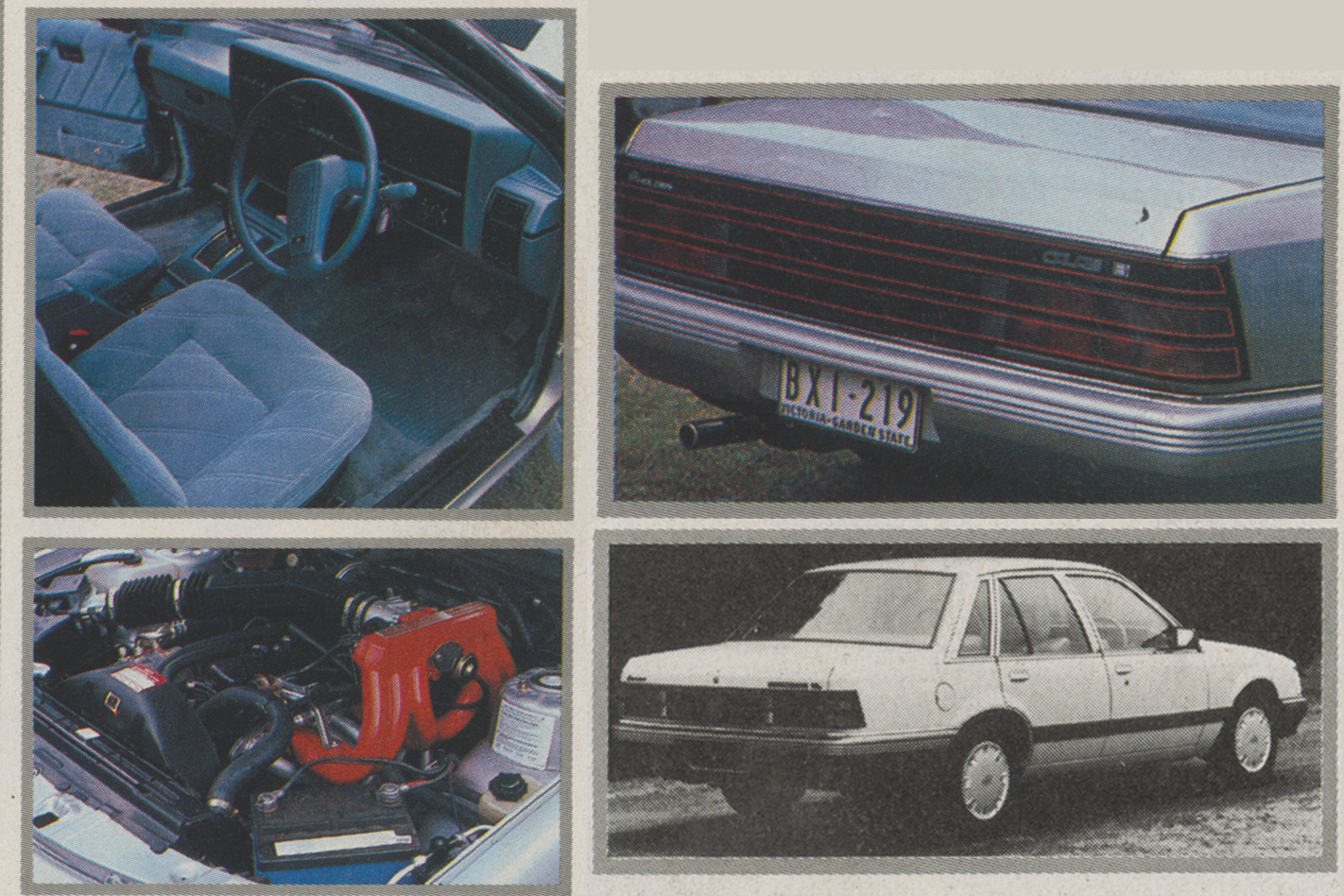
On the Calais the instruments are fully electronic vacuum fluorescent for the first time on an Australian designed car and the trip computer is an integral part of the instrumentation. There are two speedos, one digital and the other a coloured bar graph which rises at an angle to 80km/h and then runs horizontally, with a bar graph tachometer following the same path immediately below it. At first glance and even at the end of a 200km drive program, they still weren’t as easily read as the VH’s conventional dials but that, it seems, is hardly the point.
Even the trip meter and odometer are now digital and there is a small back up system which ensures that the total distance travel is never lost, even if the battery is removed. The trip computer displays eight different functions in three groups: time, distance and fuel. All radios and radio/cassettes feature electronic tuning and digital frequency displays and the quality of the speakers has been improved.
Minor controls are operated by touch switches to the left of the instruments and above the central air vents. Heater/ventilation and air conditioning controls have been simplified and the air conditioning follows the Camira experience in using a turbo rotary compressor that can pump 120 litres of air per second compared to 93 litres of air with the old system. With all of the advanced electronics, the engineers have subjected the VK to comprehensive analysis to ensure they do not radiate electro-magnetic interference.

As part of Holden’s on-going development to reduce the chances of your Commodore being stolen, a shield has been added to the steering column to prevent access to the locking system and the VK will shortly get door latch shields to protect them from intrusion.
At the same time the radio/stereo now has a retention bracket to make it far harder to steal.
Can the VK lift the Commodore to its former heights? Given a price advantage, public acceptance of the styling and plenty of marketing muscle, that’s a possibility. It will be difficult, of course, to overcome the momentum built up by Ford and its aggressive dealers, but this Commodore will bring back many people who drive an older model and who want their neighbours to know they have the latest. From that viewpoint, if none other, it must be a winner.

